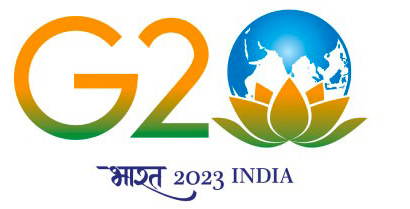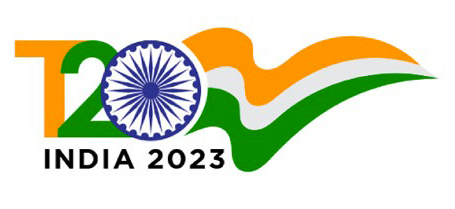Multiple challenges compromise the sustainability of agriculture and food production systems in the South Asian region. These include the high rate of growth of population, transition in diets, climate change and related environmental changes and degradation that accompanied fast-paced urbanisation. In India, the biggest challenge is for agriculture to meet the daily dietary needs of the masses along with environmental stresses such as depleting groundwater resources. Developments in agriculture aiming to improve nutrition outcomes, therefore, need to take into account the effects of reduced groundwater availability, repercussions of climate change and forecasted dietary transitions to provide adequate input into the design and adaptation of policies related to agriculture and production system. The environmental impacts of the programme should be considered in order to design and implement interventions which promote sustainable and resilient farming systems. With agriculture and allied sectors contributing to almost 20 percent of the Gross Domestic Product (GDP) while providing employment to a majority of the population and India assuming the G20 Presidency until November 2023, it is pertinent that there will be a focus on finding pragmatic global solutions for the wellbeing of all. Agriculture, nutrition and their linkages are central to realise Sustainable Development Goals (SDG 1) to end poverty and SDG 2 which focuses on sustainable agriculture, achieving zero hunger, and ending malnutrition in all its forms. Related to agriculture is also SDG12, i.e. responsible production and consumption which is one of the focus areas of ‘Lifestyle for the Environment- LiFE’ . Starting with the increased awareness in the population on the production and consumption of nutrient-dense crops, providing the right incentives and support to produce nutrient-rich crops such as pulses and millets, and promoting self –consumption, especially by growing millets, pulses, fruits and vegetables in kitchen gardens and on common areas, which can be used for consumption- attention is required at different levels.
For improving diet diversity and influencing nutrition outcomes, pulses and millets are nutrient-dense and are considered important for improving the diet of the Indian population. These are also climate-resilient crops and are important in the context of the challenges to agriculture posed by climate change, directly along the lines of LiFE. Pulses also known as leguminous crops can fix the nitrogen levels in the soil, thereby, reducing the dependency on nitrogenous fertilisers. They are useful for crop rotation and mixed cropping as they replenish the soil in nitrogenous compounds. Therefore, increasing the area under pulses as well as using pulses as an inter-season crop is an easy pathway to increase sustainable agriculture practices; the requirement for nitrogen-based chemical fertilisers is reduced for the subsequent crops and frequent crop disease cycles are interrupted by the decreased use of chemical pesticides and weedicides. A situational analysis of state and crop-wise area production and yield for five major pulses, along with that of local pulses was undertaken using the NSSO data of 2004-5 and 2011-12. The findings revealed that despite several initiatives such as the Integrated Scheme of Oilseeds, Pulses, Oil Palm and Maize (ISOPOM), National Food Security Mission (NFSM ), Rashtriya Krishi Vikas Yojana (RKVY), Accelerated Pulses Production Programme (A3P) and Pulse Development Scheme under NFSM and despite the import of pulses, the per capita availability of pulses were reported to be less than the recommended dietary allowance (RDA) of 40 grams per day. The policy of providing pulses at a subsidised rate via the distribution system in some states (Tamil Nadu, Karnataka, Andhra Pradesh, Himachal Pradesh, and Chhattisgarh) resulted in a higher average in the overall consumption of pulses, leading to improved protein intake. Agriculture policies on pulses need to ensure production policy are combined with organised marketing system as well as a in institutionalising a system for assured procurement, greater investment on research and development of pulse varieties, and timely decision for imports.
A study on millet production in India reported positive growth during 1950-51 to 1980-81 driven mainly by sorghum, pearl millet, and finger millet and negative growth later in the area under total millets, the increase. The main source of growth in the production of millets was due to high yield per hectare during the period 1950-51 to 2011-12. Several states are also taking initiatives in recent years to increase the production of millets. For example, the State Government of Odisha, India has initiated the Odisha Millet Mission—a government-civil society-farmer initiative to increase the production of millets. Production measures also need to be combined with actions to create demand for millets. A good example is Karnataka, where supply of millets at a subsidised price through the public distribution system is combined with measures for increasing awareness among people on the health benefits of consumption of millets in daily diet. For enhancing the value of millets and positively impacting the market price, encouraging the use of millets in various ready-to-eat food products by private industry needs to be promoted.
Besides focusing on nutrient-rich crops like pulses and millets and consumption of fruits and vegetables (FV) also needs to be encouraged to address micronutrient-deficiencies and to prevent non-communicable diseases. In India, government schools and ICDS centres are encouraged to maintain nutrition gardens of fruits and vegetables with the aim of using the produce in the mid-day meal for children. The average consumption of FV in an Indian household is in the range of 149 to 152 grams/day/person (less than three servings) as assessed against the World Health Organization (WHO) norm of consumption of 400grams of fruit and vegetables per day (five servings).
The evidence from studies relating to agriculture policy showcase that synergy is needed between the agriculture, environment, health and nutrition sectors to leverage sustainable agriculture practices for better nutritional outcomes. The incentives to grow or invest in certain crops such as pulse, millets, fruits and vegetables have consequences on nutrition through consumption as well as consequences on the environment as they naturally replenish the soil with nitrogen and being climate smart requires less water than wheat, paddy, and sugarcane. There is a clear need for a policy shift in favour of climate-resilient crops such as pulses and millets in northern India. The existing policy which promotes the growth of wheat and rice in India has repercussions on the quality of air due to parali burning in the winter months and the quantity of water due to the decreasing water table. A push towards pulses, millets and FV will not only aid in improving the soil quality, it will also work wonders for the water table at a negligible additional cost. In the long run, this would work for the holistic development of agriculture, health, nutrition and environment and is probably the best way forward in order to meet the goal of “Lifestyle for Environment” by accentuating sustainable consumption. Through G20 leadership, India can certainly showcase by example how sustainable production and consumption is possible by encouraging the growth of nutrient rich and climate resilient crops.
(This essay is a part of the commentary series on G20-Think20 Task Force 3: LiFE, Resilience, and Values for Wellbeing)




